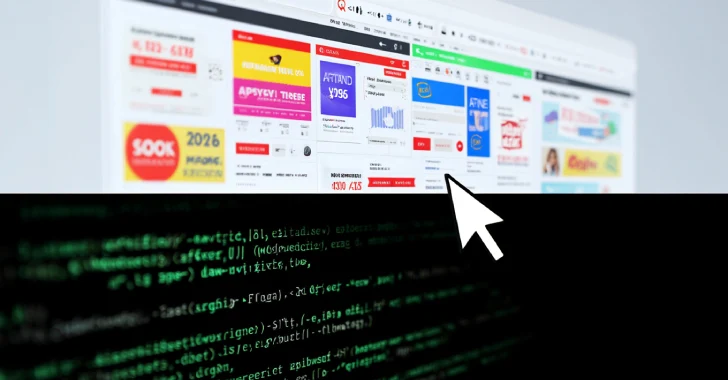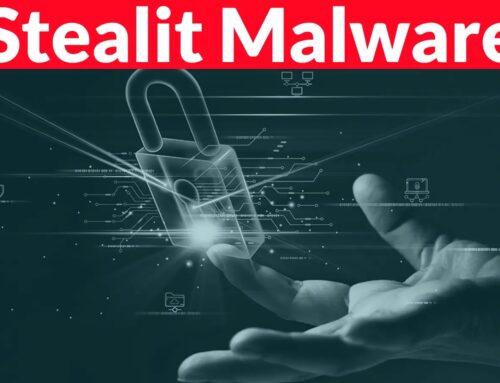
New PS1Bot Malware Campaign Uses Malvertising to Deploy Multi-Stage In-Memory Attacks
Unmasking PS1Bot: A New Multi-Stage Threat Emerging from Malvertising Campaigns
In the relentless landscape of cyber threats, new adversaries emerge with alarming frequency, sophisticated in their tactics and devastating in their impact. Staying abreast of these developments is not merely advantageous; it is a fundamental pillar of robust cybersecurity. Recently, cybersecurity researchers have identified a nascent and concerning threat: the PS1Bot malware campaign. This multi-stage, in-memory attack framework is being deployed via insidious malvertising, making it a particularly challenging adversary to detect and mitigate. Understanding PS1Bot’s mechanisms, from its initial infection vector to its modular capabilities, is paramount for fortifying digital defenses.
What is PS1Bot?
PS1Bot represents a new frontier in complex malware, distinguished by its multi-stage, in-memory execution and its modular design. Unlike traditional malware that leaves persistent files on disk, PS1Bot often operates purely in memory, significantly complicating detection through conventional endpoint security solutions. Its delivery method, malvertising, leverages legitimate advertising networks to inject malicious content, often redirecting unsuspecting users to compromised sites or initiating drive-by downloads.
The Malvertising Infection Vector
The initial compromise phase of the PS1Bot campaign hinges on malvertising. This technique involves injecting malicious code or advertisements into legitimate ad networks. When a user clicks on one of these tainted ads, or sometimes simply by loading a webpage containing them, they are covertly redirected to a malicious landing page. This page then initiates the download and execution of the PS1Bot loader, often disguised as legitimate software or updates.
- Deceptive Advertisements: Malvertising campaigns leverage seemingly innocuous web ads.
- Redirection Chains: Clicks on these ads often lead through multiple redirects before reaching the final malicious payload.
- Drive-by Downloads/Social Engineering: The final stage can involve silent downloads or tricking users into executing a downloader.
PS1Bot’s Modular Architecture and Capabilities
Once the initial loader compromises a system, PS1Bot reveals its true nature: a highly modular framework designed for a wide array of malicious activities. Its in-memory execution prevents direct forensic analysis and disk-based detection. The modularity allows the attackers to deploy specific tools and functionalities on a per-victim basis, adapting to the target environment and their objectives. Key capabilities observed include:
- Information Theft: Exfiltration of sensitive data, credentials, and financial information.
- Keylogging: Capturing keystrokes to steal passwords, credit card numbers, and other typed data.
- Reconnaissance: Gathering detailed information about the compromised system and network, including user accounts, installed software, and network configuration.
- Establishing Persistence: Implementing mechanisms to ensure the malware maintains access to the system, even after reboots, often through sophisticated techniques that evade detection.
- Further Module Delivery: The ability to download and execute additional malicious modules or payloads, making the threat highly adaptable and extensible.
Common Tactics, Techniques, and Procedures (TTPs)
The PS1Bot campaign showcases several TTPs indicative of a sophisticated adversary:
- In-Memory Execution: A primary tactic to evade traditional antivirus and EDR solutions that rely on file-based signatures.
- Obfuscation and Encryption: The malware often employs heavy obfuscation and encryption to hide its true intent and evade static analysis.
- Legitimate Software Mimicry: Disguising malicious files and processes to appear as legitimate system components or applications.
- Exploitation of Trust: Leveraging the trust users place in advertising networks for initial compromise.
Remediation Actions and Proactive Defenses
Defending against threats like PS1Bot requires a multi-layered approach, combining user education with robust technical controls. Given its in-memory nature and malvertising vector, a proactive stance is essential.
- Endpoint Detection and Response (EDR) Solutions: Deploy EDR solutions capable of behavioral analysis and in-memory threat detection. These tools can identify suspicious process injection, memory modifications, and network communications indicative of PS1Bot.
- Network Traffic Monitoring: Implement robust network monitoring to detect anomalous outbound connections or suspicious DNS requests often associated with command-and-control (C2) communication.
- Ad Blocker and Script Blocker Browser Extensions: Encourage or enforce the use of reputable ad and script blocking extensions to mitigate the risk of malvertising.
- Regular Software and OS Updates: Ensure all operating systems, web browsers, and applications are kept up-to-date with the latest security patches. This frequently addresses vulnerabilities exploited by initial compromise vectors.
- User Awareness Training: Educate users about the dangers of clicking on suspicious advertisements, even on seemingly legitimate websites. Emphasize the importance of verifying URLs before clicking and recognizing social engineering tactics.
- Principle of Least Privilege: Enforce the principle of least privilege for all user accounts and system processes to limit the potential damage if a compromise occurs.
- Application Whitelisting: Consider implementing application whitelisting to prevent the execution of unauthorized or unknown executables.
Tools for Detection and Mitigation
| Tool Name | Purpose | Link |
|---|---|---|
| Osquery | Endpoint visibility, SQL-based queries for memory artifacts. | https://osquery.io/ |
| Sysinternals Suite (Procmon, Autoruns) | Advanced system utility for monitoring processes, file system, registry, and identifying persistence mechanisms. | https://learn.microsoft.com/en-us/sysinternals/downloads/sysinternals-suite |
| Velociraptor | Endpoint visibility and digital forensics incident response (DFIR) tool with live artifact collection. | https://docs.velociraptor.app/ |
| Browser Security Extensions (uBlock Origin, NoScript) | Client-side ad blocking and script control to mitigate malvertising. | https://github.com/uBlockOrigin/uBlock-Origin (uBlock Origin) |
Conclusion
The emergence of PS1Bot, with its reliance on malvertising and sophisticated multi-stage, in-memory attacks, underscores the evolving threat landscape. Cybersecurity professionals must evolve their strategies, moving beyond traditional signature-based detection to embrace behavioral analytics, robust network monitoring, and comprehensive user education. Proactive defense, continuous vigilance, and a commitment to immediate remediation are crucial to safeguarding against this new wave of adaptable and challenging malware threats.





